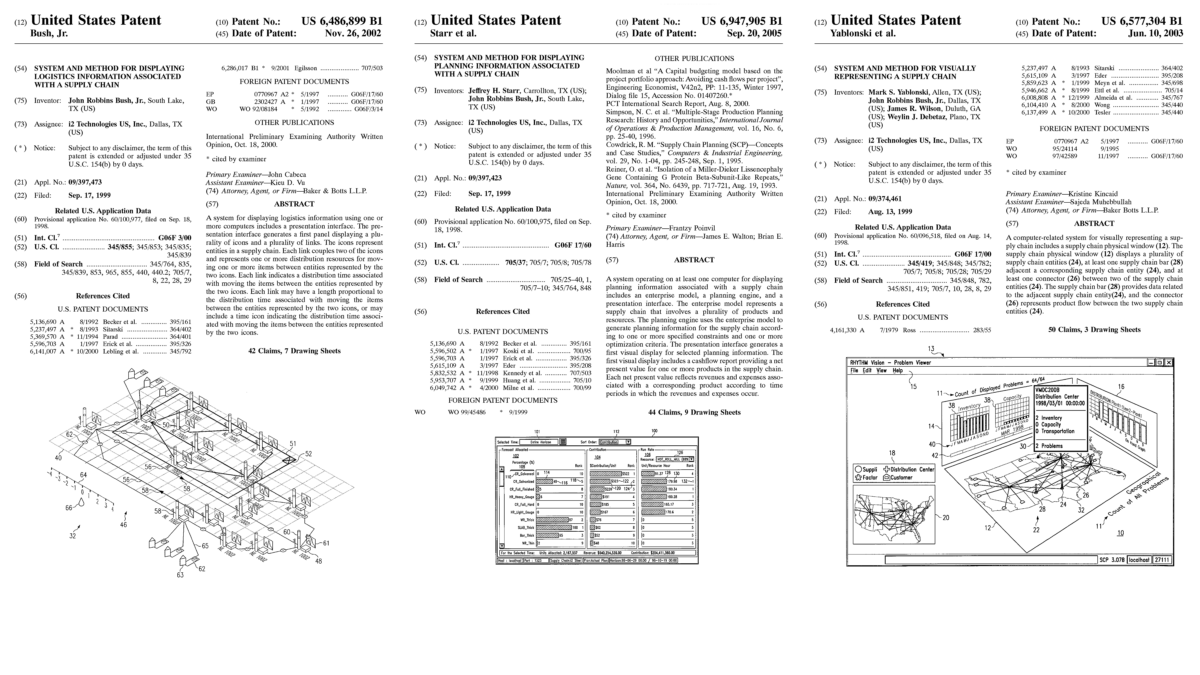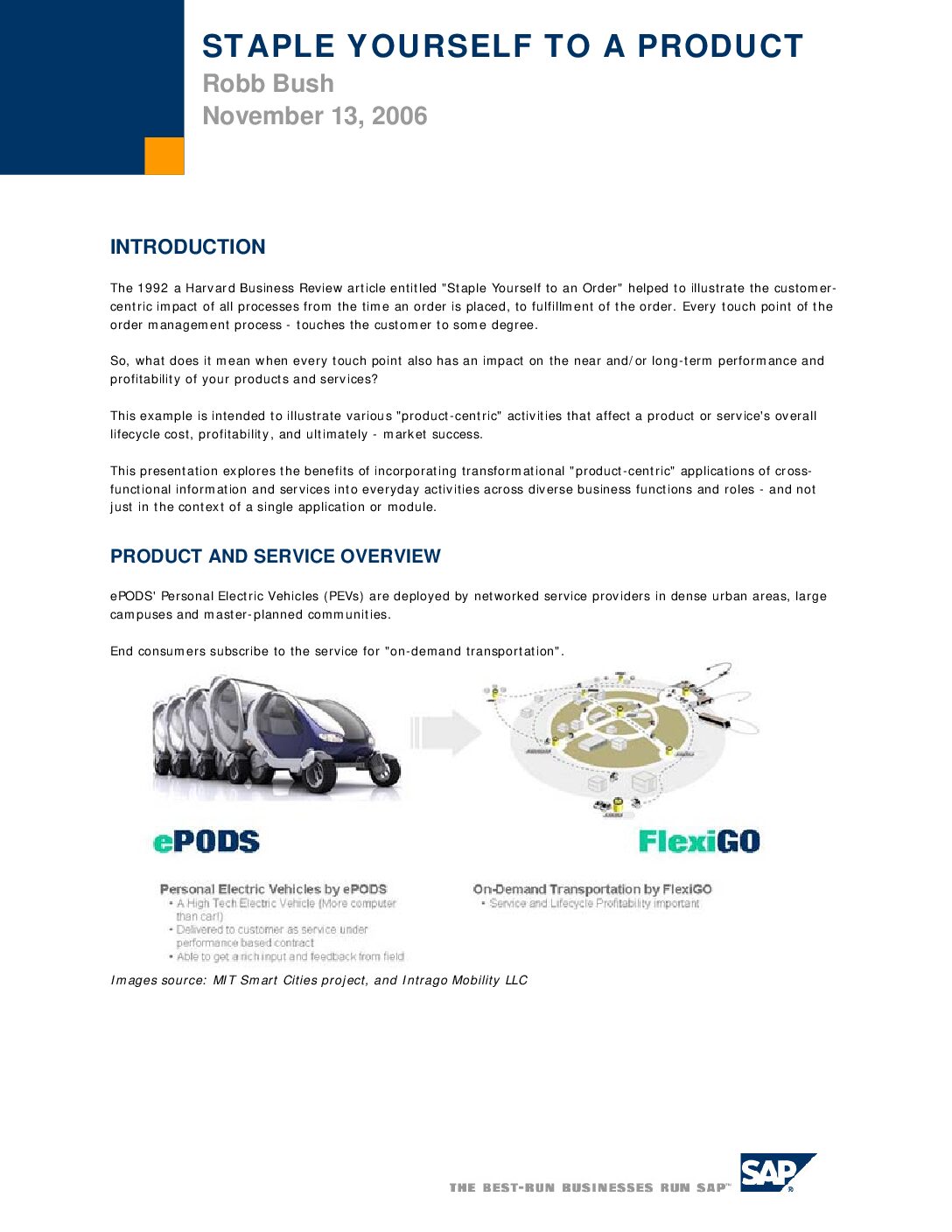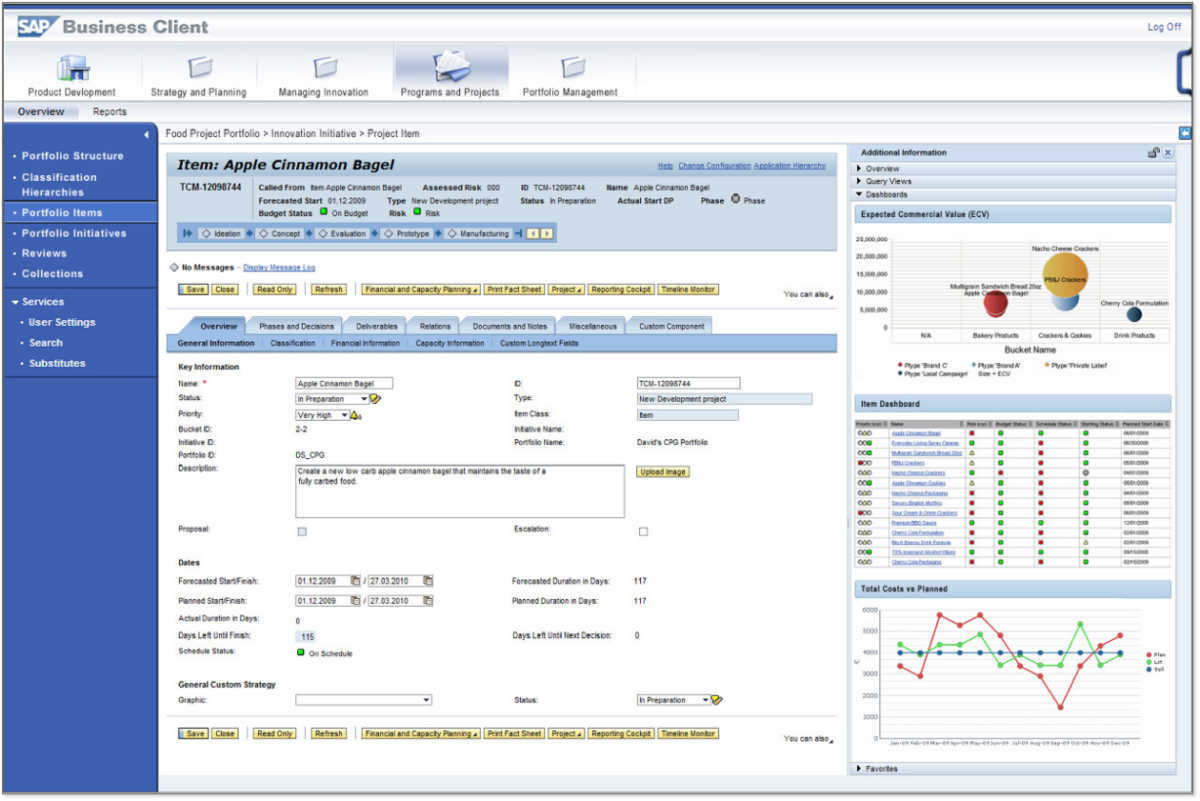Robb was the product “owner” for SAP’s first “embedded analytics” solution that presented contextual analytics related to the business object (eg Project, Order, Customer, Item, etc). This capability shipped with SAP Business Suite 5.
With SAP’s acquisition of Business Objects, additional tools became available. Robb led the specification and development of Dashboards for analyzing Product and Service performance.
Primary Role: Sr. Director – Solution Management
Secondary Role(s):
Business Driver(s): Capture Market Opportunity
Results & Benefits: Improved Customer Enthusiasm
Time Range: 2008-2009
Class: Product









